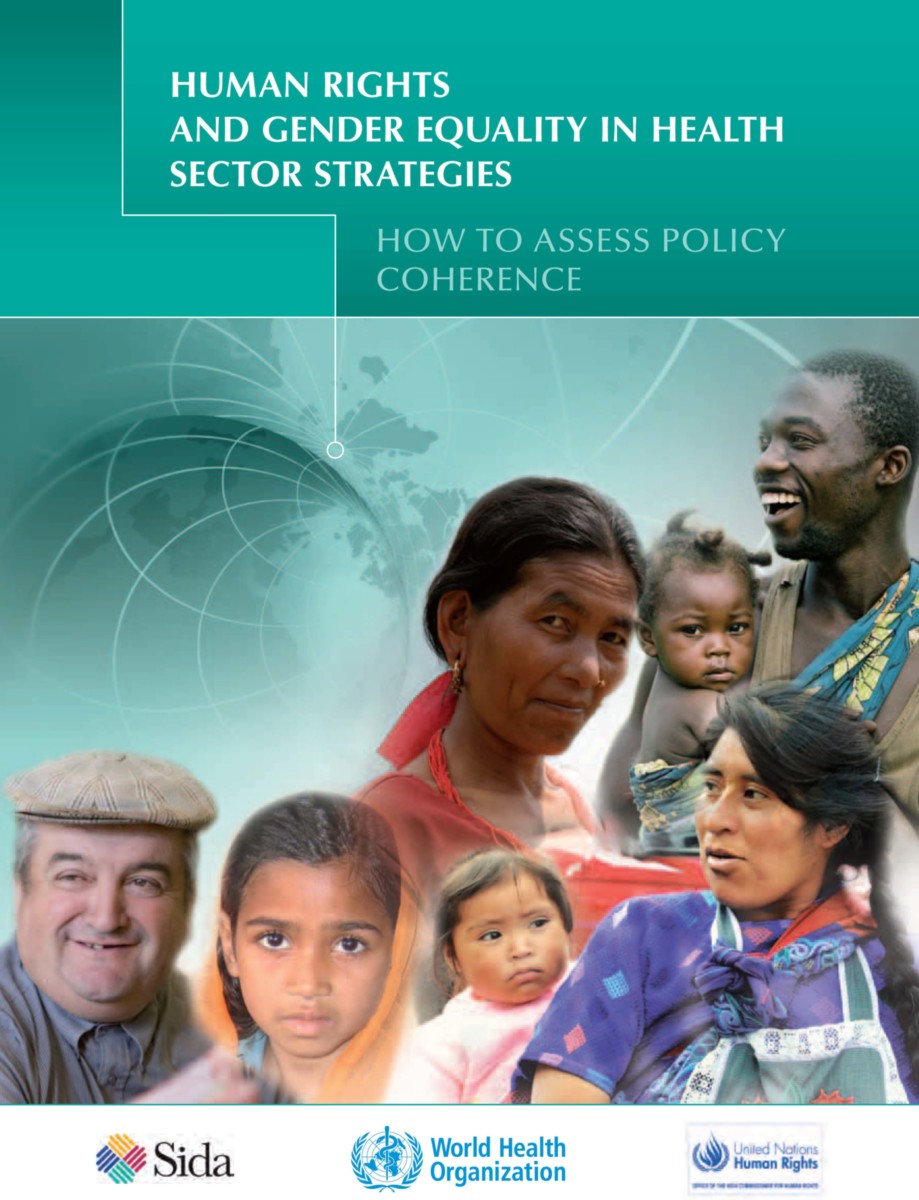Human Rights and Gender Equality in Health Sector Strategies
How to Assess Policy Coherence
- Publisher
World Health Organization - Published
27th March 2012 - ISBN 9789241564083
- Language English
- Pages 150 pp.
- Size 8.5" x 11"
The overall aim of the tool is to enhance coherence between international obligations and commitments on human rights and gender equality, the national legal, policy and insitutional frameworks, and their application in health sector strategies. The specific objectives of the tool are to: assess the extent to which health sector strategies are consistent with, and promote, human rights standards and principles, including gender equality; identify gender equality and human rights-related gaps and opportunities with respect to national commitments and health sector strategies, in order to facilitate effective and strategic health sector interventions; adn generate a multi-stakeholder process and dialogue to address human rights and gender equality in relation to health.
The target audience of the tool comprises the various actors involved in health planning and policy-making, implementation or monitoring of health sector strategies. This includes health policy-makers and planners, national human rights institutions, development partners and civil society organizations. Its use will vary depending on the specific context and focus of the assessment exercise.
World Health Organization
World Health Organization is a Specialized Agency of the United Nations, charged to act as the world's directing and coordinating authority on questions of human health. It is responsible for providing leadership on global health matters, shaping the health research agenda, setting norms and standards, articulating evidence-based policy options, providing technical support to countries, and monitoring and assessing health trends.


